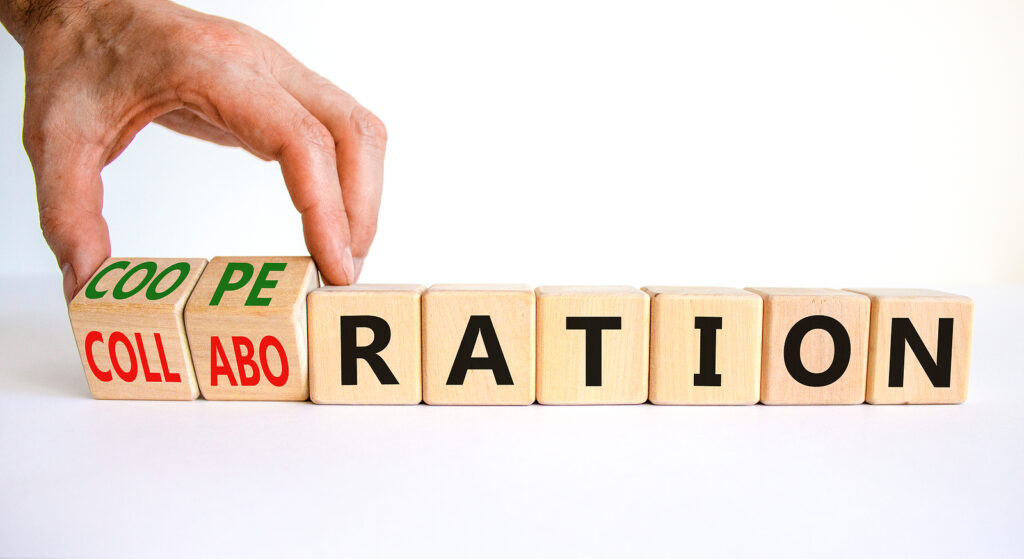& Construction

Integrated BIM tools, including Revit, AutoCAD, and Civil 3D
& Manufacturing

Professional CAD/CAM tools built on Inventor and AutoCAD
3 min read
This guide covers the basic steps for successful design collaboration, whether you’re new to a team or want to improve best practices.
Before jumping head-first into the topic of design collaboration, it’s important to understand the best ways to communicate and work effectively with your colleagues. Successful collaboration comes from a series of steps. This guide will help you understand why collaboration is essential and how to maintain a healthy and effective collaborative design environment.

Collaboration, or the process of communicating and working together to pursue an end goal, is the cornerstone of any successful design team.
A team that learns to collaborate effectively can complete projects quicker, solve problems faster, and reduce unnecessary costs. Collaboration saves time and money by the same methods from a corporate perspective. Teams collaborating without friction can help push more quality products out the door in less time than a singular person. More product on the market equals more money in the company vault. Collaboration also increases morale and reduces employee turnover.
Now that you understand why we collaborate let’s look at the steps you can take to ensure you are an effective collaborator.
There are steps you can take to ensure that you are the best collaborator you can be:
Companies rely on diverse teams of specialists to complete the task at hand. A diverse group allocates knowledge bases from different backgrounds. Having a team of similar people from the same background increases the possibility of innovative stalemates. If you all know the same information, it is less likely that you will be able to solve problems as limited perspectives are being presented.
Diverse teams bring different perspectives. A group of people who know various techniques and skills is a better formula for success.

Communication is the most critical aspect of any working relationship. Successful teams are founded on trust and transparency. Team members must feel comfortable and empowered to contribute to proposals, workflows, and designs while providing ample feedback. In today’s work-from-home world, you must also be able to communicate asynchronously, as other designers might be in a different part of the world.
Set goals early in the project lifecycle to maintain a certain degree of transparency. Goals should be reasonable, adequately documented, and measurable. All team members should be aware of goals and deadlines.
Design teams can only be as successful as the quality of their tools. Several software platforms for designers exist, but not as many promote design collaboration through cloud-based data management tools. Autodesk Fusion 360 provides a central data management system that allows designers to work together in real-time without ever leaving the software.
Fusion 360 supports computer-aided design (CAD), computer-aided manufacturing (CAM), printed circuit board (PCB), and computer-aided electronics (CAE) capabilities in an all-in-one platform.
This step is somewhat optional, depending on the industry. However, designers typically need to document what they are doing and how they are doing it. This could be in the form of process documents, comments alongside the design, proposals, or reports. Adequate documentation reduces confusion and creates a record of why decisions were made. Designers can reference documentation in the future to help answer questions or improve the design process for the next project.
Just like technical writers, designers can use feedback to revise prior iterations of their work. Ensure your feedback is professional, unbiased, and helpful to the current goals. Successful teams know how to filter out unnecessary feedback. Everything the team does should work towards the end goal.
Roadblocks, or anything that hinders the team’s progress, can quickly derail design collaboration. A roadblock could be a hardware problem, a communication problem, changing deadlines, unanswered questions, or unexpected design flaws. Identify roadblocks and meet with the team to discuss possible solutions before they cause more significant issues.
By clicking subscribe, I agree to receive the Fusion newsletter and acknowledge the Autodesk Privacy Statement.
Success!
May we collect and use your data?
Learn more about the Third Party Services we use and our Privacy Statement.May we collect and use your data to tailor your experience?
Explore the benefits of a customized experience by managing your privacy settings for this site or visit our Privacy Statement to learn more about your options.